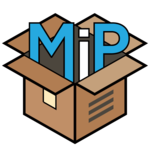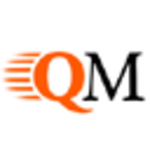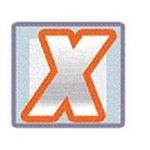Yes, most movement software may be used on numerous devices and platforms. This provides customers with greater flexibility and ease when accessing the software from various devices or operating systems. Some moving software even provides cloud-based solutions, allowing access from any device with an internet connection. However, it is critical to confirm with the program supplier about compatibility and any constraints.
List of 20 Best Moving Software
Moveware is a versatile and cutting-edge moving software utilized by businesses in over 35 countries. Our all-in-one customizable solution simplifies all facets of moving operations. Discover its advantages by registering for a complimentary demo on...Read More Moveware
MoveitPro is a cloud-based solution for all moving and storage companies. Our software streamlines business operations with an intuitive interface and extensive features. Take advantage of a free demo and see for yourself why so many companies have e...Read More MoveitPro
QuickMove is a moving software solution for your company. This comprehensive and efficient platform streamlines all aspects of your moving business, from on-site logistics to overall operations. With advanced features and a mobile solution, QuickMove...Read More QuickMove
Mover System solution for streamlining your moving and storage business. This state-of-the-art CRM software offers a user-friendly web interface, allowing easy access from any device. Simplify and enhance your management processes with seamless workf...Read More Mover System
NetSirv, the innovative moving company estimate software built to meet the evolving demands of the moving and storage industry. Our powerful platform offers a wide range of features, adaptability, and simple navigation. With NetSirv, you can streamli...Read More Netsirv
SmartMoving - a moving company estimate software that caters to all the requirements of your business. With its intuitive interface and smooth operations, it maximizes sales and enhances profits. Enjoy round-the-clock assistance from our dedicated su...Read More SmartMoving
Moverworx is a relocation software that offers complete cloud-based functionality. From efficient tariff management to precise calculation systems, it simplifies all operations seamlessly. With its real-time dispatching and personnel distribution, al...Read More Moverworx
Revolutionize your moving company with P-Move solution for seamless and effective business management. Experience the power of advanced technology as you effortlessly handle bookings, track trucks, and manage staff, all in one user-friendly platform...Read More P-Move
eMove is a transportation solution designed to transform urban travel. Our customizable electric vehicles offer a sustainable and convenient option for city residents. With eMove, navigating busy streets becomes more efficient and eco-friendly. Embra...Read More eMove
MoveSoft is a highly regarded software solution recognized for its consistent and dependable performance in a multitude of applications. Its robust capabilities and smooth integration offer the confidence needed for streamlined operations and enhance...Read More MoveSoft
Voxme MFC is a moving software designed to streamline the entire relocation process. With cloud-based access and automated lead processing, this solution offers customizable workflows and seamless integration with local and network printers for effic...Read More Voxme MFC
GRANOT - the industry-leading moving company software built for success. Since its launch in 2001, GRANOT has been trusted and proven to revolutionize the way moving businesses operate. With its user-friendly platform, you can easily manage employee...Read More GRANOT
Movegistics is solution for all your moving needs. It is software designed to streamline and simplify your moving operations, allowing you to save time and money. Its advanced workflow capabilities and a variety of features make it suitable for both...Read More Movegistics
MoversSuite, the premier cloud-based software tailored for the moving industry. With a robust user base of 8,000, it offers a comprehensive solution for managing every aspect of your moving business, from customer service to accounting. Optimize your...Read More MoversSuite
SmartMove the tenant screening software. In a few simple steps, property owners can access comprehensive background checks from TransUnion within minutes. Our user-friendly platform offers quick and secure payment options, providing reliable reports...Read More SmartMove
Mr Mover Manager - the premier moving software that revolutionizes and optimizes your business processes. With a track record of 30 years of success, this software is specifically tailored to boost efficiency and maximize profits for moving companies...Read More Mr Mover Manager
MovePoint is a software tailored for businesses in the moving and storage field. It efficiently oversees all aspects of business operations including estimates, HR, claims, payroll, and email marketing. With its user-friendly interface, managing lead...Read More MovePoint
KickServ is an advanced dispatch scheduling software that is tailored to optimize your operations and enhance efficiency. Our customizable features and robust tools allow you to effectively organize and manage your business tasks. Our committed suppo...Read More Kickserv
QuellMove - the leading software-as-a-service platform custom-made for the moving and storage industry. Our cutting-edge technology is specifically designed to cater to the needs of all types of moving companies. Say farewell to outdated methods and...Read More QuellMove
MoveNinja – solution for your moving and storage business. Our state-of-the-art software simplifies lead tracking, sales management, and move orders for your company. Its intuitive interface and advanced features increase efficiency and stream...Read More MoveNinja
Learn More About Moving Software
- What Is Moving Software?
- What Are The Recent Trends In Moving Software?
- Benefits Of Using Moving Software
- Important Factors To Consider While Purchasing Moving Software?
- What Are The Key Features To Look For In Moving Software?
- Why Do Businesses Need Moving Software?
- How Much Time Is Required To Implement Moving Software?
- What Is The Level Of Customization Available In Moving Software?
- Which Industries Can Benefit The Most From Moving Software?
- Conclusion
What Is Moving Software?
Moving software, often known as relocation management software, is a sort of technology that assists individuals and businesses in planning and carrying out their move to a new place. It simplifies and automates a variety of operations, including inventory management, logistics, and communication, to ensure a seamless and effective move. One of the key advantages of using moving software is its capacity to concentrate and arrange all relevant information about the transfer.
This includes information concerning inventory, budget, packing lists, and timelines. Having all of this information in one location simplifies tracking and managing the move's progress. Moving software often includes functions like cost estimation, budget tracking, and expense management. This gives users a better picture of the whole cost of their move and helps them stick to their budget.
Furthermore, many moving software packages have task management tools that enable users to assign and track tasks to team members or employees participating in the relocation. This enhances collaboration and coordination, particularly in business relocations. Another advantage of employing moving software is its ability to integrate with other applications and platforms.
This allows users to sync data with email, calendars, and other applications, making planning and execution even more efficient. When choosing moving software, you must evaluate your move's individual demands and constraints. Some software may be more appropriate for residential transfers, while others may be better suited for commercial relocation. It's also crucial to consider the user interface, convenience of use, customer service, and pricing alternatives.
What Are The Recent Trends In Moving Software?
Moving software, sometimes called relocation software, is intended to automate and simplify the process of relocating a house or workplace. Over time, this type of software has changed to accommodate the changing needs of consumers.
Here are some recent developments in moving software that you should be aware of before making a purchase.
1. Cloud-Based Solutions: One of the most significant trends in software development is the transition to cloud-based solutions. These types of software enable users to access their data from any location, making it easier to coordinate with moving companies, organize packing lists, and track essential papers. Cloud-based moving software is also more safe because the data is kept on remote servers with enhanced security protections in place.
2. Mobile Apps: Another trend in software distribution is the creation of mobile apps. These apps provide people a simple and user-friendly solution to manage their relocation from their smartphones or tablets. These smartphone apps improve the efficiency and organization of the moving process by providing features such as inventory management, task monitoring, and contact management.
3. Artificial Intelligence: Many moving software suppliers are beginning to add artificial intelligence (AI) into their offerings. This technology enables increased automation and personalization, making the relocation process easier and more tailored for each user. For example, AI can assess a user's move history and preferences to recommend the best moving companies and services based on their requirements.
4. Virtual Surveys: Traditionally, moving companies would conduct in-person surveys to provide accurate moving estimates. However, with the advancement of virtual surveying technology, many moving software packages now include virtual survey capabilities. This enables users to conduct surveys remotely, decreasing the requirement for in-person sessions and resulting in more accurate estimates.
5. Real-Time Monitoring: Many moving software packages now include real-time monitoring functions, which allow customers to monitor their relocation in real time. This gives users peace of mind because they can track the progress of their transfer and be informed of any potential delays or concerns. Real-time tracking also enables improved communication between moving companies and their customers, resulting in a more transparent and efficient moving experience.
Benefits Of Using Moving Software
Moving can be a stressful and intimidating chore, but technology can help make it more easy and efficient. One such technology is moving software, which is specifically developed to help individuals and organizations with their relocation.
In this buyer's guide, we'll look at the advantages of using moving software and how it can simplify your next move.
1. Efficient Planning And Organization: Moving software offers a consolidated platform for planning and coordinating all aspects of your relocation. This software makes it easy to create a complete inventory of your goods, schedule moving dates, and manage expenses. It eliminates the need for different spreadsheets, lists, and papers, ensuring that all information is in one place and easily accessible.
2. Time And Cost Savings: One of the most major advantages of using moving software is the time and money it saves. Users can enter their relocation specifications, such as household size, specific objects to be relocated, and distance to their new place. The software then creates an exact cost estimate and recommends the most cost-effective moving solutions, allowing you to stay on budget.
3. Real-Time Tracking And Communication: Moving software allows you to trace your goods in real time, from the minute they leave your old home until they arrive at their new location. This tool provides peace of mind and allows you to arrange your time effectively. The platform also allows for direct communication with the moving firm, which allows for timely updates and the resolution of any complaints or questions.
4. Personalized Checklists: Moving entails a variety of chores, and it is easy to lose track of important goods in the chaos. Moving software allows you to construct unique checklists depending on your individual needs, such as packing, removing furniture, and changing addresses. These checklists serve as a helpful reminder to ensure that nothing is neglected during the relocation process.
5. Secure Storage And Protection: Moving software provides secure storage solutions for precious objects that you may not want to relocate immediately. Some software enables users to snap photos of their goods, resulting in a digital inventory for insurance. This function ensures that your belongings are sufficiently preserved and accounted for during the relocation process.
6. Reduction Of Paperwork: Moving software reduces the need for extra paperwork and manual documentation, rendering the entire process paperless. This not only benefits the environment, but it also lowers the likelihood of losing or misplacing documents. Users may save and access all of their moving papers within the software, saving time and effort.
Important Factors To Consider While Purchasing Moving Software?
When it comes to acquiring moving software, numerous crucial criteria must be examined in order to discover the best fit for your requirements. As a buyer, you should conduct research and assess the features and capabilities of several software solutions before making a purchase.
Here are some crucial aspects to consider when selecting relocation software.
1. Purpose And Goals: Before choosing a moving program, you should identify your specific purpose and goals for using the software. Are you a small moving company searching for a basic system for managing customer reservations and inventory? Are you a larger organization looking for a comprehensive solution to manage several sites and complex operations? Understanding your purpose and goals will help you select software that is tailored to your specific requirements.
2. Features And Functionality: The features and functionality of movement software might differ significantly. Basic functions to look for include scheduling, invoicing, customer management, and inventory tracking. Depending on your unique needs, you may want to investigate extra features like GPS tracking, real-time updates, and mobile app compatibility.
3. Ease Of Use: Moving is already a complicated and time-consuming procedure, so you don't want software that is difficult to use. Look for software with an easy-to-use interface and uncomplicated navigation. It should also provide training and support to assist you and your staff in quickly establishing operations.
4. Integration And Compatibility: Determine whether the transferring software is compatible with other tools and systems that you already use or want to use in the future. This will ensure that data is transferred smoothly and procedures are streamlined.
5. Security: Because moving entails managing sensitive client information, it is critical to use software that has strong security measures in place. Make sure the program has data encryption, safe server hosting, and regular backups to protect your data from cyber dangers.
6. Scalability: Your moving software should be able to expand alongside your firm. Look for software that is scalable and can meet your shifting needs.
7. Customer Assistance: Because no program is perfect, it is critical to have dependable customer assistance if you run into any problems or have inquiries. Look for a software vendor with various support channels and an excellent track record of providing responsive customer assistance. By taking these elements into account, you can make an informed selection when selecting moving software that suits your company's requirements and allows you to simplify and manage your operations more efficiently. Don't forget to read reviews and request demos to gain a better knowledge of the program before purchasing.
What Are The Key Features To Look For In Moving Software?
When it comes to choosing the best moving software for your needs, there are several important factors to consider. These features can significantly improve the efficiency and efficacy of your moving process, saving you time, money, and aggravation.
These are the most important features to look for in moving software, so you can make an informed selection and choose the best option for your moving needs.
1. User-Friendly Interface: When selecting moving software, the user interface is the most important factor to consider. A user-friendly and intuitive design will help you and your team navigate and use the product more efficiently. To ensure a seamless user experience, look for features like as drag-and-drop functionality, customized dashboards, and clear labeling.
2. Customization Options: Each moving company is unique, and your software should be adaptable to your individual requirements. Look for software that allows you to customize templates, fields, and reports. This allows you to adjust the program to your own business procedures, making it more efficient.
3. Inventory Management: One of the most important aspects to look for in moving software is inventory management. This includes the ability to generate an inventory list, track products, and print individual labels. Some software may also have barcode scanning capabilities, making it easier to keep track of objects and lowering the risk of losing or damaging them during the move.
4. Scheduling And Planning: Any effective moving program should have a scheduling and planning capability. This allows you to manage your team's schedules, assign assignments, and monitor progress. Look for software that provides real-time updates and notifications to keep everyone on the same page and the relocation process working smoothly.
5. Client Management: To deliver an outstanding client experience, your moving software must include a dedicated customer management component. This may include the ability to save consumer information, track communication, and provide targeted updates and reminders. Look for software that has a customer portal so clients may view their relocation information and make payments online.
6. Route Optimization: For large-scale moves, route optimization is an important factor to consider. This will allow you to design and optimize the most effective routes for your moving vehicles, saving you time and money on fuel. Some software may also include real-time GPS monitoring, which allows you to watch your vehicles' movements and make modifications as needed.
7. Reporting And Analytics: Finally, any thorough moving software should have reporting and analytics capabilities. This enables you to monitor and evaluate critical variables including expenses, sales, and client satisfaction. Look for software that allows you to create customisable reports and understandable analytics to help you make informed decisions and improve the overall operation of your moving business.
Why Do Businesses Need Moving Software?
Moving a business can be a difficult and time-consuming task, with many moving pieces and the opportunity for blunders. Moving software can help organizations handle the moving process in a more streamlined and efficient manner. But why do firms require relocation software?
Let's look at the top reasons below.
1. Organization And Planning: One of the most important advantages of moving software is its ability to keep the moving process orderly and well-planned. Features like task management, timetables, and checklists assist organizations in staying on track and completing all necessary work prior to the transfer.
2. Cost Efficiency: The relocating process can be costly, with expenses like as hiring movers, purchasing packing materials, and leasing new office space. Moving software can assist organizations in keeping track of their spending and making strategic decisions to save costs.
3. Time Savings: In the business world, time is money, and the longer you spend on the relocation process, the less time you have to run your firm. Moving software can greatly accelerate the moving process, allowing firms to restart operations and produce income faster.
4. Collaboration And Communication: Moving software often includes collaboration and communication facilities that allow several team members to work seamlessly together. This is especially useful for larger firms that are relocating many departments or locations.
5. Data Management: During a move, firms must manage a large amount of data, such as inventory lists, employee information, and relocation budgets. Moving software provides a centralized platform for storing and organizing this information, making it readily available when needed.
6. Improved Client Communication: Moving software can help organizations that provide moving services communicate more effectively with their clients. Client portals and real-time updates can improve the overall customer experience, resulting in good feedback and referrals.
How Much Time Is Required To Implement Moving Software?
The time necessary to implement moving software will vary depending on the software and your specific requirements. Moving software implementation can take anywhere from a few days to several weeks, if not months. To calculate an accurate implementation timetable, carefully examine your current procedures as well as the software's capabilities.
First and foremost, the complexity and volume of your shifting operations will have a considerable impact on the time necessary for execution. If you are a small business with little inventory and a simple moving procedure, implementation may be faster than for a huge corporation with a lot of inventory and a complicated moving process.
Another thing to consider is the amount of customization and integration required for the program to work with your existing systems and procedures. The more personalized and integrated the program must be, the longer the implementation process may take. Additionally, the level of personnel training and software acceptance will have an impact on the timeline.
It is critical to set aside enough time for training sessions and provide staff with support and direction so that they can utilize the program efficiently. It is advised that you collaborate closely with the software provider to identify an approximate schedule for deployment and properly convey your goals and expectations. This will contribute to a successful and timely deployment procedure.
Overall, there is no defined time period for installing moving software; nonetheless, it is critical to properly examine your needs and collaborate closely with the software provider to obtain an exact schedule. This will help guarantee that the implementation process runs smoothly and efficiently, meeting your needs and improving your relocation operations.
What Is The Level Of Customization Available In Moving Software?
When it comes to moving software, one essential consideration is the level of customization available to match your individual requirements. Customization enables you to adjust the program to your own business operations, workflow, and needs, resulting in a more efficient and successful moving procedure. Most moving software provides a variety of customization choices, ranging from basic preferences to complex settings.
These customization tools are intended to provide you the freedom to adjust the software based on your company's specific needs and processes. One popular customization feature in moving software is the ability to establish client profiles and enter unique information such as contact information, inventory, desired moving dates, and any special requirements.
This allows you to save all important information in one location, making it easier to engage with and provide specialized services to your clients. Moving software generally includes price and invoicing customization, letting you to define your own rates, discounts, and payment options. This functionality is useful for businesses who have varied pricing structures or provide customized packages for various sorts of migrations.
Another customization feature to look for in moving software is the ability to build and change checklists and templates to match your company's processes. These can include pre-move, packing, and post-move checklists that can be personalized with your company logo, branding, and specific duties to help your team stay organized. Advanced customization options could include the ability to interact with other software or services that are critical to your operation. Accounting software, CRM applications, and scheduling platforms are all possible examples.
Which Industries Can Benefit The Most From Moving Software?
Moving software can be extremely beneficial to a wide range of industries that demand effective and structured management of moving procedures.
Here are some of the leading industries that can profit the most from employing moving software:
1. Residential Moving And Relocation Companies: Moving software may significantly improve the operations of residential moving and relocation companies by include capabilities like scheduling, inventory management, and electronic contracts. This can save time and resources for these businesses, allowing them to serve more customers and enhance customer satisfaction.
2. Commercial Moving Firms: Commercial moving companies frequently manage large and complex relocation that necessitate meticulous preparation and coordination. Moving software may help these organizations create precise moving plans, maintain inventory, and manage various teams and tasks at once, making the entire process more effective and organized.
3. Property Management firms: For property management companies that manage several properties and handle tenant relocation, moving software might be a game changer. It can assist with move-in and move-out inspections, tracking leases and contracts, and arranging maintenance and repairs during the relocation process.
4. Event And Trade Show Organizations: Equipment, exhibits, and supplies are frequently transferred to several sites for events and trade exhibitions. Moving software may make this process easier by offering real-time tracking, automated billing, and advanced planning features to ensure a smooth and stress-free event setup.
5. Government Agencies: Government agencies, such as military or municipal offices, frequently need moving services for staff relocations or the movement of equipment and supplies. Moving software can help these organizations maintain their budgets, comply with rules, and save essential information securely electronically.
Conclusion
After analyzing several moving software choices, it is evident that investing in such a tool may be quite beneficial to people and businesses trying to expedite their moving process. Moving software provides a variety of capabilities that can assist save time and money, including inventory management, task organization, detailed report creation, and expense tracking.
While each software may differ in terms of pricing, user interface, and additional features, the most important factors to consider when selecting a moving software are compatibility with your devices, convenience of use, customer service, and overall value for money. It's also critical to examine your individual requirements and ensure that the software you purchase meets them. Furthermore, most moving software firms offer free samples and demos to help you understand the software's features and how it might fit into your moving process. This provides hands-on experience and assists in making an informed decision.
To summarize, moving software may be an invaluable resource for both individual and business movers. Its features and capabilities can help improve efficiency, accuracy, and organization during the relocation process. By thoroughly researching and evaluating the major elements, you may choose the finest moving software for your specific needs and budget.
Moving Software FAQ's
Can Moving Software Be Accessed Across Multiple Devices And Platforms?
Is Moving Software Future-Proof And Adaptable To Emerging Technologies Like AI, Blockchain Or IoT?
Moving software is continually improving to keep up with emerging technology like artificial intelligence, blockchain, and the Internet of Things. With the incorporation of these technologies, moving software becomes more efficient and accurate in managing moves. It is future-proof since it can adapt to the changing needs of the industry. With features such as smart scheduling, online tracking, and safe payments, it improves the moving experience for both customers and businesses.
Is There A Free Trial Offered To Assess Moving Software Before Committing?
Yes, many moving software providers provide free trials for users to evaluate the product before making a purchase. This allows consumers to test out the software's features and functionalities to see if it satisfies their requirements. It also allows them to acquire a sense of the user interface and ensure it is user-friendly. Make sure you use these free samples before making a selection.
Does Moving Software Offer Data Security Features And Meet Regulatory Compliance Standards?
Yes, most reliable moving software includes data security safeguards and complies with regulatory requirements. They use strong encryption methods to keep your data safe during the migration procedure. Furthermore, they have strict security processes in place to prevent data leaks. These software also follows industry-specific laws such as HIPAA for healthcare and GDPR for the European Union. Rest confident that your data will be safe using reliable moving software.
Can Moving Software Integrate Seamlessly With Existing Tools And Platforms?
Yes, most moving software is intended to work easily with existing tools and platforms. They frequently have the capacity to integrate with major CRMs, accounting software, and project management applications, making data transfer and organizing more efficient. However, it is always advisable to check with the individual moving software vendor to assure compatibility with your current tools and platforms. This will enable a smoother shifting procedure and fewer potential disturbances.






















